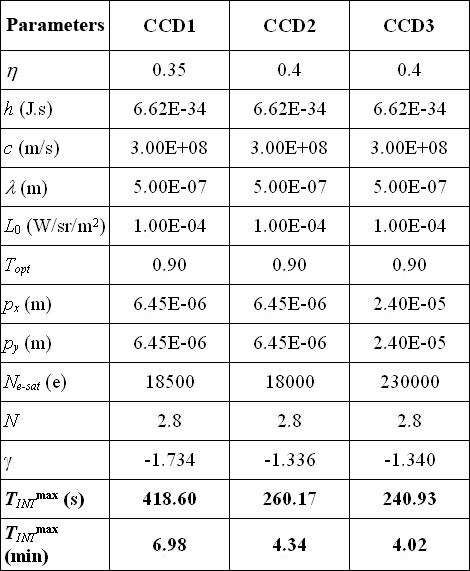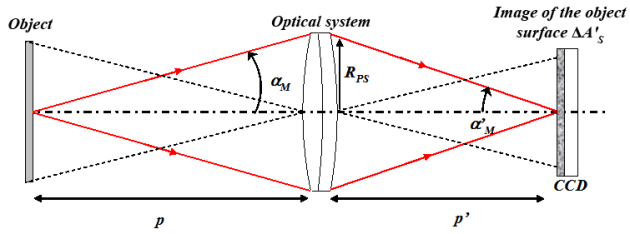Optimizing the exposure time of the sensor
To determine the exposure time, we need to determine the number of electrons generated by the photon source for one pixel (\(N_{e^{-}}\)), then impose that this number is inferior to the total number of electrons at saturation (no image saturation).
To determine \(N_{e^{-}}\), we must assess the illumination obtained at the level of the image sensor. Figure 1 represents the imagery configuration.
The light flow coming from the imagery objective can be determined by:
with \(\Delta A'_{S}\) as the surface of the image.
For a pixel with a surface of \(p_{x}\times p_{y}\) the number of photoelectrons generated by the incident light for the duration \(t_{INT}\), and for a wavelength \(\lambda\), is:
With the imagery parameters, we obtain:
Just at the sensor saturation point, there must be \(N_{e-}<N_{e-sat}\), so we can deduce that the maximum exposure time is given by:
This relation shows that it is better to open the aperture diaphragm as much as possible, so as to minimize the exposure time. It also shows that the bigger the size of the pixel, the shorter the exposure time.
The results of the integration time of the sensor are shown in table 3.

We can see that CCD1 is disqualified because its maximum exposure time is one minute, which is not enough compared to the exposure time needed for this type of sensor (about 7 minutes). We will thus choose CCD2 and CCD3. To finalize this choice, we can assess the maximum signal-to-noise ratio we can hope for.
